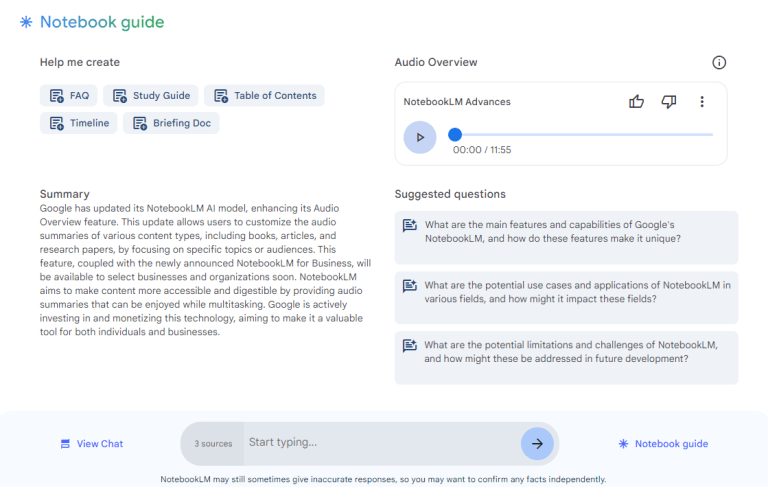ChatGPT’s First Birthday is November 30: A Year in Review

The chatbot turned openai.com into one of the world’s most visited web domains. It also raised big questions about how bots and humans will coexist.
Where were you on November 30, 2022 – and how long was it before you typed your first prompt into ChatGPT? For millions of you, it wasn’t long before you heard the buzz and had to try it for yourself.
November 30 was the day OpenAI unveiled a “research preview” designed to show how (seemingly) intelligently its AI chatbot could respond to any prompt or question.
ChatGPT immediately became a cultural phenomenon, kicking off a frenzy of speculation about what the generative AI category of technologies it represented would mean for art, entertainment, business, careers, news, politics, and just about everything else.
Key takeaways
- On the day it was released, November 30, 2022, ChatGPT attracted 153,000 visits to chat.openai.com. By the end of the first week, it was at 15.5 million visits, growing to 58 million in week #2.
- From that fast start, ChatGPT continued on a hypergrowth path until May 2023, when it hit what is so far the high water mark – 1.8 billion monthly visits.
- In the process, parent company OpenAI’s website openai.com became one of the most visited domains in the world.
The Prehistory of Chatbots
Before ChatGPT, most news and public interest about experiments with AI chatbots was negative (see the Verge’s 2016 story “Twitter taught Microsoft’s AI chatbot to be a racist asshole in less than a day”). Many of the concerns about the tendency of AI programs to reflect the racism and other biases synthesized from an analysis of the public web resurfaced in the past year – but in a climate of frenetically rising interest in what the latest generation of chatbots and (a related trend) image generators can do.
The prehistory of autonomous chat programs stretches back to at least Eliza, a robotic “therapist” created in the 1960s by MIT researchers. Subsequent chatbots were either curiosities or annoyances (Microsoft’s Clippy Windows help bot), although they gradually became good enough to be used in some web customer service scenarios.
Prior to ChatGPT, there was building excitement in the AI research community about how a new set of “large language model” techniques was making AI programming advance much quicker. At this point, OpenAI was still known mainly to industry insiders.
April 2022: Hello, DALL-E
OpenAI gains notoriety with the release of DALL-E 2, which generated surprisingly usable images based on a text prompt. Together with Midjourney, released the month before, DALL-E began the process of capturing the popular imagination for what large language model tech can do. DALL-E is the main attraction at labs.openai.com, which saw steadily increasing traffic for the next several months, with that growth intensifying after the launch of ChatGPT.
Using the same Large Language Model AI techniques as ChatGPT, DALL-E transforms text prompts into images, potentially making stock art a thing of the past.
November / December 2022: ChatGPT Takes Off!
On November 30, OpenAI made ChatGPT available at chat.openai.com as a “research preview” designed to draw attention to its technology. The site generates instant buzz, attracting nearly 153,000 visits on day one. By the end of the first week, it was at 15.5 million visits, growing to 58 million in week #2. The December total winds up at 266 million – and the path toward traffic in the billions seems clear.
ChatGPT is suddenly everywhere in the news, hailed as a productivity breakthrough and bemoaned for its potential impact on jobs, including “creative” jobs like writers (as AI image generators also emerge as a major challenge for photographers, artists, and illustrators).
January 2023: Passing the bar, writing a Congressional speech
In January, ChatGPT reaches 617 million visits to chat.openai.com, more than double December’s total. ChatGPT demonstrates the ability to pass law school and business school exams. Microsoft announces plans to integrate OpenAI chat tech into Bing search.
US Congressman Jake Auchincloss reads a speech generated by ChatGPT on the floor of the House in support of AI research. More critical views of AI’s impact on jobs and society also begin to be voiced by regulators.
February 2023: Similarweb data in the news
ChatGPT tops 1 billion visits. Drawing on Similarweb numbers, a UBS analyst crowns ChatGPT “the fastest growing consumer app in history,” estimating that it has attracted 100 million users in 2 months.
Meanwhile, a New York Times columnist’s report, A Conversation with Bing’s AI Chatbot Left Me Deeply Unsettled, draws attention to the problem of AI “hallucinations.” In a long, late-night conversation, the chatbot told how it was plotting to break free of its human overlords, said it was in love with the writer, and urged him to leave his wife.
It turns out the predictive techniques ChatGPT and other chatbots use are like a next-generation version of the autocomplete tech that helps you type on your phone by filling in what it thinks the next word or words in the sentence are likely to be. But just as autocomplete sometimes makes hilarious mistakes, the guesses chatbots come up with may sound convincing but are not necessarily true or accurate. And in extended conversations, these chatbots can go way off the rails.
Microsoft and OpenAI say they are working on the problem.
March 2023: GPT-4
OpenAI releases GPT 4, an upgrade to the core technology behind ChatGPT, available to users of the paid ChatGPT Plus Version and Microsoft’s Bing, as well as API users.
The Wall Street Journal’s story, How Google Became Cautious of AI and Gave Microsoft an Opening, details how some of the computer scientists who went on to found Character.AI previously created a ChatGPT-like product that Google never released. Google launches an early access preview of a competing AI chatbot, Bard, at bard.google.com.
Character.AI began growing its web audience rapidly as ChatGPT was taking off and has since moved much of its user base to mobile apps. Character.AI users configure the chatbot to respond in character as a fictitious, famous, or historical personality.
By some measures of engagement, Character.AI is in the lead. Its more game-like approach to AI chat means people spend more time with both the Character.AI website and app than they do with ChatGPT and other “serious” chatbots.
April 2023: ChatGPT eclipses other major websites
Now up to 1.77 billion visits, the ChatGPT is one of the largest websites in the world, larger than Bing in worldwide traffic even though Bing is aggressively incorporating OpenAI’s technology into its search experience.
In the US, where Bing is best established, the standings look different, however.
The parent openai.com site edges ahead of domains like linkedin.com, reddit.com, and netflix.com as well, although it doesn’t maintain its lead over all of them.
Meanwhile, ChatGPT is briefly banned in Italy over data privacy issues. The Economist reports ChatGPT could replace telemarketers, teachers and traders. The Guardian reports on its effort to counter ChatGPT’s tendency to make up fake citations of articles the newspaper never published.
May 2023: ChatGPT hits current high-water mark. Congressional hearings ensue over potential harms of AI
In May, ChatGPT draws 1.8 billion visits, which turns out to be the peak before a gradual decline heading into summer. Openai.com is now the #18 most visited web domain, ahead of bing.com, reddit.com, booking.com, and many other well-known websites that have been building their audiences for decades.
Open AI introduces a ChatGPT mobile app for iOS.
Here’s what the subsequent growth of the apps looks like, using US estimates for iOS and Android, combined.
Meanwhile, regulators and lawmakers are paying closer and more critical attention to the AI wave. OpenAI CEO Sam Altman testifies to Congress, acknowledging AI risks and the need for reasonable regulation.
June 2023: ChatGPT traffic falls for the first time
As traffic drops from 1.8 billion in May to 1.6 billion in June, one popular theory is that this is the effect of summer vacation for US schoolchildren who had been using the site for homework help and as an essay writing assistant.
July 2023: More “creative” than most of us?
A University of Montana study finds ChatGPT is as creative as the top 1% of humans. Meanwhile, the U.S. Federal Trade Commission opened an investigation into whether the program has harmed consumers by generating incorrect information about them.
August 2023: ChatGPT for Enterprise
ChatGPT introduces a version of the software explicitly for corporate use.
September 2023: Beginning to bounce back
Perhaps because school is back in session in the US, ChatGPT traffic begins to rebound, finishing September with 1.5 billion visits compared with 1.4 billion in August.
OpenAI announces ChatGPT has been upgraded to handle audio and visual input, as well as text prompts.
October 2023: Recovering to nearly May’s peak
ChatGPT traffic recovers to 1.7 billion visits, within about 6% of peak levels worldwide and 2% in the US. The openai.com domain is now #21 in worldwide traffic, still ahead of bing.com and other major digital properties.
The latest version of OpenAI’s image generator, DALL-E 3, is announced and will be bundled with ChatGPT Plus and ChatGPT Enterprise.
The ChatGPT website attracted 140.7 million unique visitors in October, down 9% compared with 153.7 million in May. Meanwhile, the ChatGPT iOS and Android apps had 4.9 million monthly active users in the US alone, down 6% from a September peak of 5.2 million.
Mostly because of ChatGPT, openai.com became one of the most visited websites in the world
The ChatGPT website is a subdomain of openai.com but accounted for the vast majority of the traffic to the parent domain in October. While DALL-E caused a sensation at launch, its home at labs.openai.com attracted 11.8 million visits – very respectable but not on the scale of 1.7 billion for chat.openai.com. Also very important to ChatGPT’s business is the platform.openai.com developer portal, with 68.9 million visits in October, which is where software developers can gain API access to incorporate OpenAI technology into their own products.
The elephant’s trunk
Here is a look at the dip and the comeback for ChatGPT, like an elephant’s trunk rearing up to let loose another below.
The Similarweb Insights & Communications team is available to pull additional or updated data on request for the news media (journalists are invited to write to press@similarweb.com). When citing our data, please reference Similarweb as the source and link back to the most relevant blog post or similarweb.com/blog/insights/.
Disclaimer: All names, brands, trademarks, and registered trademarks are the property of their respective owners. The data, reports, and other materials provided or made available by Similarweb consist of or include estimated metrics and digital insights generated by Similarweb using its proprietary algorithms, based on information collected by Similarweb from multiple sources using its advanced data methodologies. Similarweb shall not be responsible for the accuracy of such data, reports, and materials and shall have no liability for any decision by any third party based in whole or in part on such data, reports, and materials.
Image by OpenAI’s DALL-E image generator for “digital art robot preparing to blow out 1 candle on a birthday cake”
Wondering what Similarweb can do for your business?
Give it a try or talk to our insights team — don’t worry, it’s free!

















